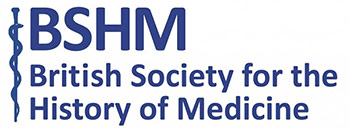How rapidly does medical knowledge advance? Very quickly if you read modern newspapers, but rather slowly if you study history. Nowhere is this more true than in the fields of neurology and psychiatry.
It was believed that studies of common disorders of the nervous system began with Greco-Roman Medicine, for example, epilepsy, “The sacred disease” (Hippocrates) or “melancholia”, now called depression. Our studies have now revealed remarkable Babylonian descriptions of common neuropsychiatric disorders a millennium earlier.

Figure 1. A well preserved Babylonian cuneiform Tablet on Epilepsy.
Number 26 in a series of 40 medical “diagnostic” Tablets.
Reproduced by kind permission of the British Museum.
There were several Babylonian Dynasties with their capital at Babylon on the River Euphrates. Best known is the Neo-Babylonian Dynasty (626-539 BC) associated with King Nebuchadnezzar II (604-562 BC) and the capture of Jerusalem (586 BC). But the neuropsychiatric sources we have studied nearly all derive from the Old Babylonian Dynasty of the first half of the second millennium BC, united under King Hammurabi (1792-1750 BC).
The Babylonians made important contributions to mathematics, astronomy, law and medicine conveyed in the cuneiform script, impressed into clay tablets with reeds, the earliest form of writing which began in Mesopotamia in the late 4th millennium BC. When Babylon was absorbed into the Persian Empire cuneiform writing was replaced by Aramaic and simpler alphabetic scripts and was only revived (translated) by European scholars in the 19th century AD.

Figure 2. A bas-relief of a wounded lioness from the Palace of Ashurbanipal at Nineveh.
An arrow in the centre of the spine was observed to lead to paralysis of the hind legs,
but knowledge of the spinal cord and its functions did not exist.
Reproduced by kind permission of the British Museum.
The Babylonians were remarkably acute and objective observers of medical disorders and human behaviour. In texts located in museums in London, Paris, Berlin and Istanbul we have studied surprisingly detailed accounts of what we recognise today as epilepsy, stroke, psychoses, obsessive compulsive disorder (OCD), psychopathic behaviour, depression and anxiety. For example, they described most of the common seizure types we know today e.g. tonic clonic, absence, focal motor, etc, as well as auras, post-ictal phenomena, provocative factors (such as sleep or emotion) and even a comprehensive account of schizophrenia-like psychoses of epilepsy. Early attempts at prognosis included a recognition that numerous seizures in one day (i.e. status epilepticus) could lead to death. They recognised the unilateral nature of stroke involving limbs, face, speech and consciousness, and distinguished the facial weakness of stroke from the isolated facial paralysis we call Bell’s palsy. The modern psychiatrist will recognise an accurate description of an agitated depression, with biological features including insomnia, anorexia, weakness, impaired concentration and memory. The obsessive behaviour described by the Babylonians included such modern categories as contamination, orderliness of objects, aggression, sex and religion. Accounts of psychopathic behaviour include the liar, the thief, the troublemaker, the sexual offender, the immature delinquent and social misfit, the violent and the murderer.
The Babylonians had only a superficial knowledge of anatomy and no knowledge of brain, spinal cord or psychological function. They had no systematic classifications of their own and would not have understood our modern diagnostic categories. Some neuropsychiatric disorders e.g. stroke or facial palsy had a physical basis requiring the attention of the physician or asû, using a plant and mineral based pharmacology. Most disorders, such as epilepsy, psychoses and depression were regarded as supernatural due to evil demons and spirits, or the anger of personal gods, and thus required the intervention of the priest or ašipu. Other disorders, such as OCD, phobias and psychopathic behaviour were viewed as a mystery, yet to be resolved, revealing a surprisingly open-minded approach.
From the perspective of a modern neurologist or psychiatrist these ancient descriptions of neuropsychiatric phenomenology suggest that the Babylonians were observing many of the common neurological and psychiatric disorders that we recognise today. There is nothing comparable in the ancient Egyptian medical writings and the Babylonians therefore were the first to describe the clinical foundations of modern neurology and psychiatry.
A major and intriguing omission from these entirely objective Babylonian descriptions of neuropsychiatric disorders is the absence of any account of subjective thoughts or feelings, such as obsessional thoughts or ruminations in OCD, or suicidal thoughts or sadness in depression. The latter subjective phenomena only became a relatively modern field of description and enquiry in the 17th and 18th centuries AD. This raises interesting questions about the possibly slow evolution of human self awareness, which is central to the concept of “mental illness”, which only became the province of a professional medical discipline, i.e. psychiatry, in the last 200 years.
Reference
Reynolds EH, Kinnier Wilson J. Neurology and Psychiatry in Babylon. Brain 2014; 137: 2611-2619.
Dr. Edward H Reynolds MD FRCP FRCpsych
Department of Clinical Neurosciences, King’s College, London




